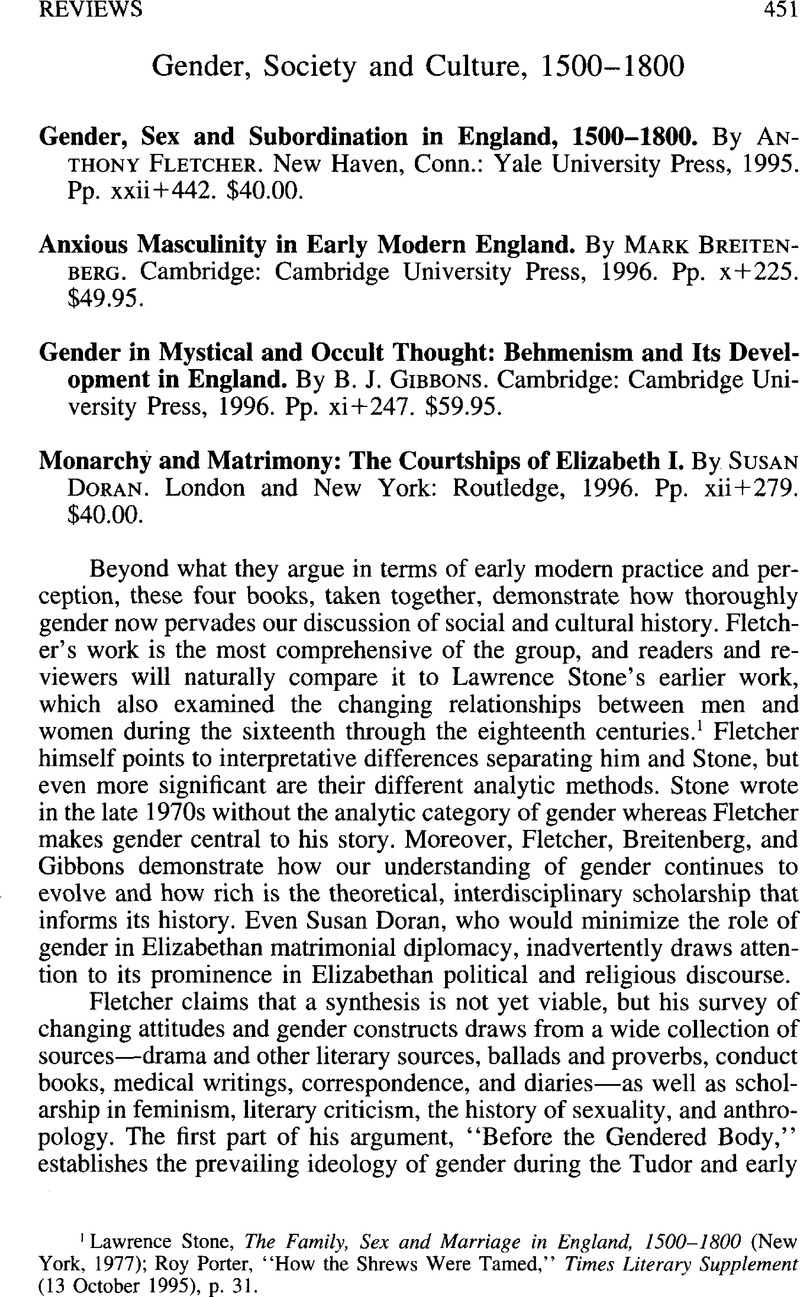No CrossRef data available.
Published online by Cambridge University Press: 10 January 2014

1 Stone, Lawrence, The Family, Sex and Marriage in England, 1500–1800 (New York, 1977)Google Scholar; Porter, Roy, “How the Shrews Were Tamed,” Times Literary Supplement (13 October 1995), p. 31Google Scholar.
2 Laqueur, Thomas, Making Sex: Body and Gender from the Greeks to Freud (Cambridge, Mass., 1990)Google Scholar.
3 See the collection of essays on “Honour and Reputation in Early Modern England” in Transactions of the Royal Historical Society, 6th ser., vol. 6 (1996)Google Scholar, esp. Heal, Felicity, “Reputation and Honour in Court and Country: Lady Elizabeth Russell and Sir Thomas Hoby,” pp. 161–78Google Scholar; Dabhoiwala, Faramerz, “The Construction of Honour, Reputation and Status in Late Seventeenth- and Early Eighteenth-Century England,” pp. 201–13Google Scholar; Gowing, Laura, “Women, Status and the Popular Culture of Dishonour,” pp. 225–34Google Scholar; and Walker, Garthine, “Expanding the Boundaries of Female Honour in Early Modern England,” pp. 235–45Google Scholar.
4 Especially useful for the balance between competency and submission is Pollock, Linda, “Teach Her to Live under Obedience: The Making of Women in the Upper Ranks of Early Modern England,” Continuity and Change 4 (August 1989): pp. 231–58CrossRefGoogle Scholar; chap. 9 in Fletcher.
5 Amussen, Susan D., An Ordered Society: Gender and Class in Early Modern England (Oxford, 1988)Google Scholar; Underdown, David, “The Taming of the Scold: The Enforcement of Patriarchal Authority in Early Modern England,” in Order and Disorder in Early Modern England, ed. Fletcher, A. J. and Stevenson, John (Cambridge, 1985)Google Scholar.
6 For the scholarship on cross-dressing and a different view on the transvestite phenomenon and the crisis in the sex-gender order, see Cressy, David, “Gender Trouble and Cross-Dressing in Early Modern England,” Journal of British Studies 35 (October 1996): 438–65CrossRefGoogle Scholar.
7 Davidoff, Leonore and Hall, Catherine, Family Fortunes: Men and Women of the English Middle Class, 1780–1850 (Chicago, 1987), p. 13Google Scholar.
8 Schwoerer, Lois, “Seventeenth-Century English Women Engraved in Stone?” Albion 16 (Winter 1984): 389–403CrossRefGoogle Scholar.
9 Frye, Susan, Elizabeth I: The Competition for Representation (New York, 1993)Google Scholar.